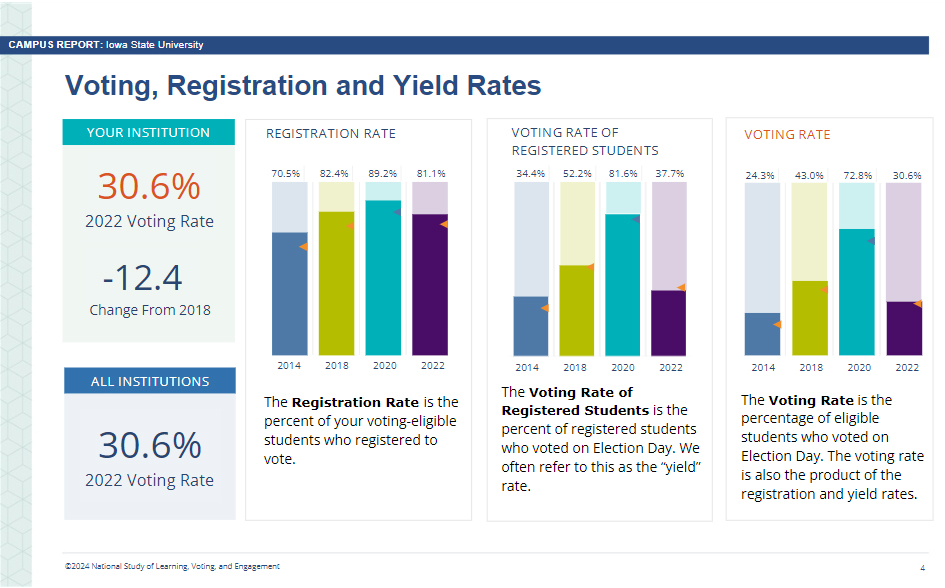On June 17, 2024, the National Survey of Learning Voting and Engagement (NSLVE) at Tufts University released Iowa State University’s 2022 Campus Report. Iowa State student voter turnout mirrored the national rate of 30.6%, a decline of 12.4% from 2018, which was a midterm election with unusually high voter turnout.

Nationally, college student voter turnout declined from 39.1% in 2018 to 30.6% in 2022. However, college student voter turnout far outpaced youth voter turnout nationally, which was 23%.
Racial and ethnic differences in Iowa State student voter turnout again reflected national patterns. Students identifying as white or multi-racial had the highest voter turnout rates (33% and 30% respectively) while students identifying as Hispanic, Asian American or Black had lower rates (23%, 18%, and 16% respectively). As in the past, older students had higher voter turnout rates than younger students, with more than half of students over age 40 casting ballots.
Women students continue to have higher voter turnout rates than their male peers. In 2022, 31% of eligible women students voted compared to 25% of men, a six-point gender gap. This is larger than the three-point gender gap for all voters in 2022.
By field of study, students majoring in women’s and gender studies had the highest voter turnout rate (65%). Other fields of study with comparatively high turnout rates were history (47%); foreign languages, literatures and linguistics (46%); and social sciences (41%). The fields of study with the lowest student voter turnout were computer and information sciences (21%); engineering and engineering technologies (24%); and parks, recreation, leisure and fitness studies (24%).
“NSLVE and Tufts University continue to provide priceless information about student voter engagement to colleges and universities nationwide,” said Karen M. Kedrowski, director of the Carrie Chapman Catt Center for Women and Politics, which coordinates student voter engagement efforts on campus. “The #CyclonesVote team will use this information to design our voter outreach and engagement strategies in 2024 and beyond.”
The full report is available on the Catt Center website.